Do film adaptations promote reading?
MAT 259, 2016
Mert Toka
Concept
In this project, I am questioning whether film adaptations of particular titles promote their printed counterparts? It is common notion that an average audience of big budget productions later being informed that the story is based on either fiction or nonfiction books. I want to examine when this revelation kicks in and pushes people to read books, and what kinds of parameters play an important role on this timeframe between movie popularity and book resurrection.
Query
SELECT
MONTH(c.checkOut) 'Month',
YEAR(c.checkOut) 'Year',
COUNT(*) '# Checkouts',
i.itemType 'Type',
t.title 'Title'
FROM
title t
JOIN
itemToBib b ON t.bibNumber = b.bibNumber
JOIN
itemType i ON b.itemNumber = i.itemNumber
JOIN
transactions c ON c.itemNumber = b.itemNumber
WHERE
t.title LIKE 'NAME_VAL%'
AND YEAR(c.checkOut) > YEAR_VAL
GROUP BY MONTH(c.checkOut) , YEAR(c.checkOut) , i.itemType
HAVING Year > YEAR_VAL
Preliminary sketches
My first idea was to bring up with a dashboard display that contains histogram information for each title:
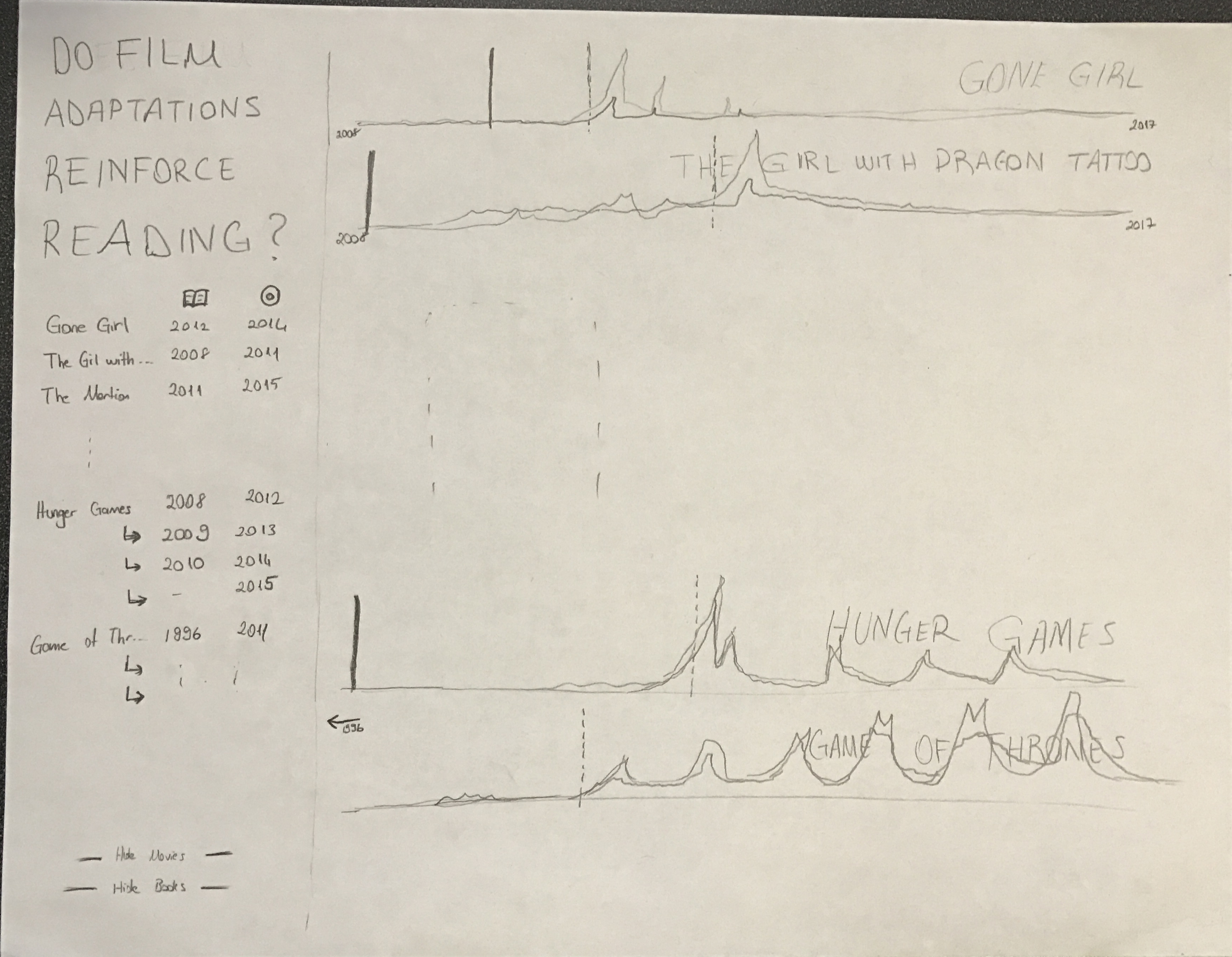
Process
In order to spice things up, I incorporated Google Trends information for titles, along with their Seattle Public Library data.
The shaded boxes in below screenshots demonstrate the difference between Google search trends and library checkouts, which has
an expected pattern since most people Googles an item whenever its anounced but due to the nature of Library, the items in film
collection are only available when DVD and CDs are released.
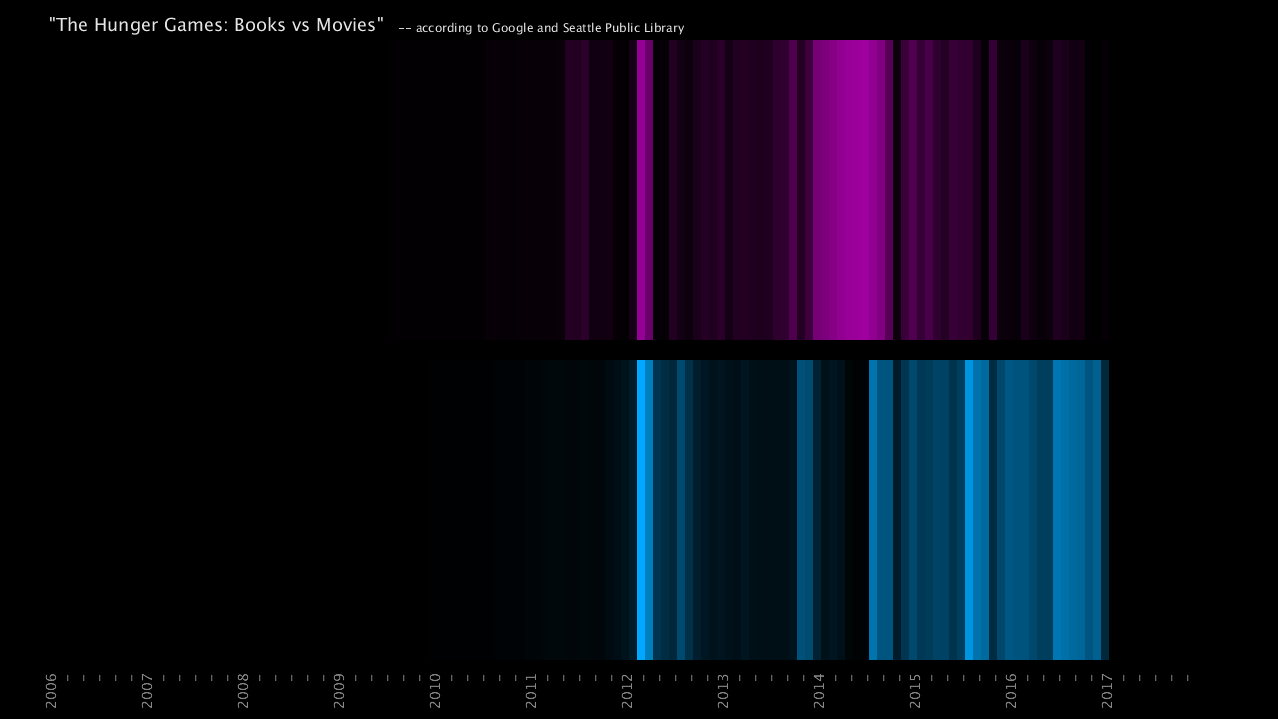
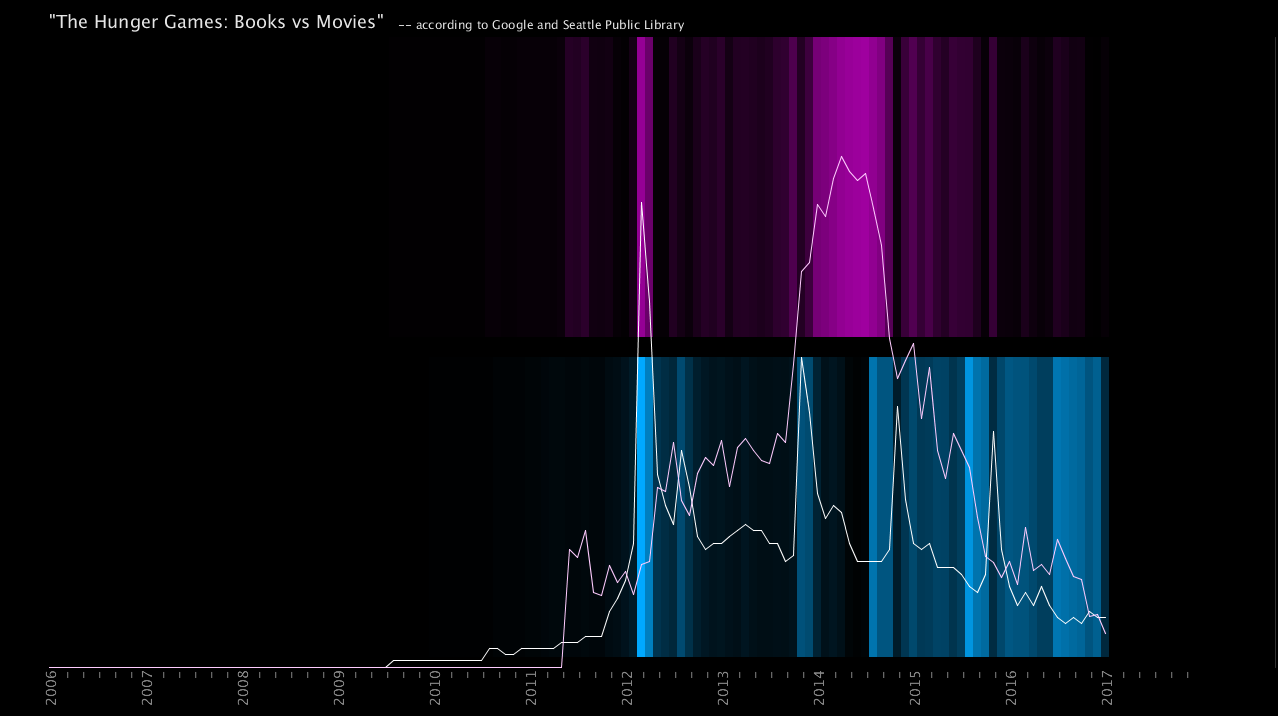


Final result
Six titles have been selected for motion picture and printed medium comparison: Orange is the New Black, Game of Thrones, Divergent, Hunger Games, Maze Runner, and Twilight. The vertical axis denotes time, and different items constitute the horizontal axis. For each title, left half shows total number of checkouts for books, whereas the right side is for the total number of movies or tv shows. Each title is assigned a different color for a quick comparison, and in display mode (1), the opacity of bar denotes the number of checkouts in increasing fashion. The display mode (3) displays the same property using the widths of the bars.
Alternatively, anytime in the execution, the background color can be changed from dark to light and vice versa.
Keyboard Shortcuts: 1 -- Color display mode
2 -- Color and width display mode
3 -- Width display mode
L -- Switches to log scaling
SPACE -- Toggles background brightness
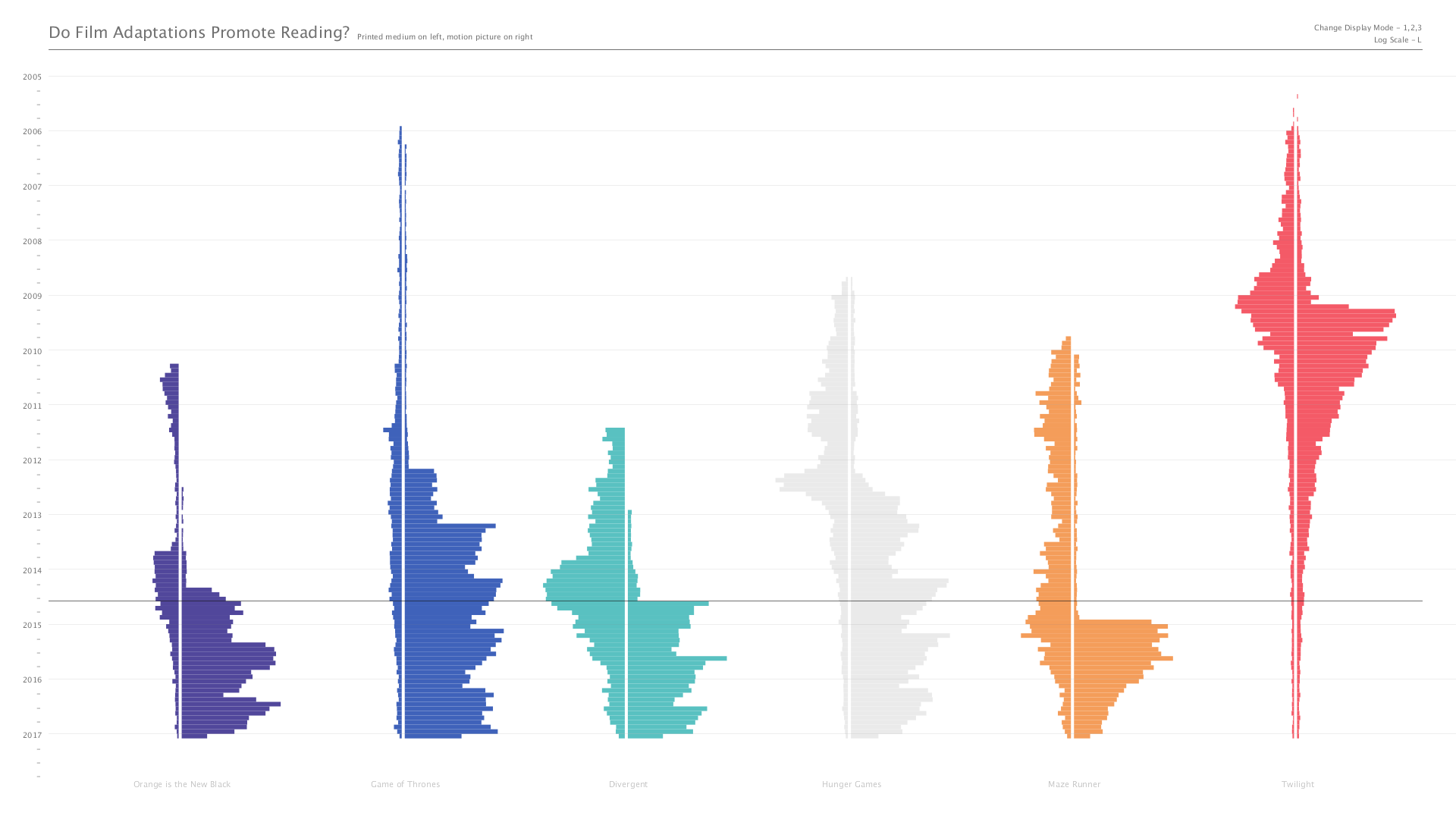
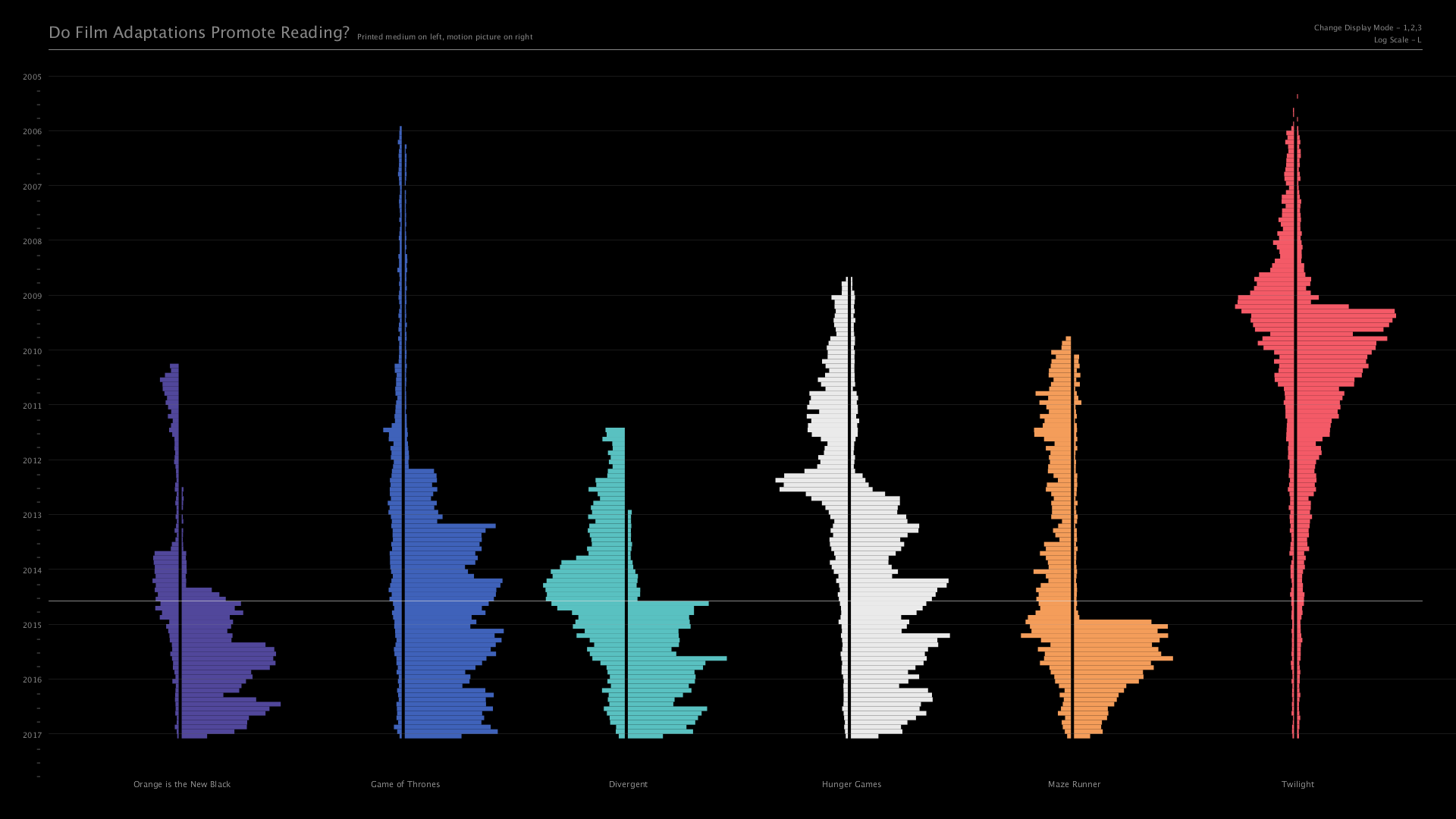 Width display only (3)
Width display only (3)
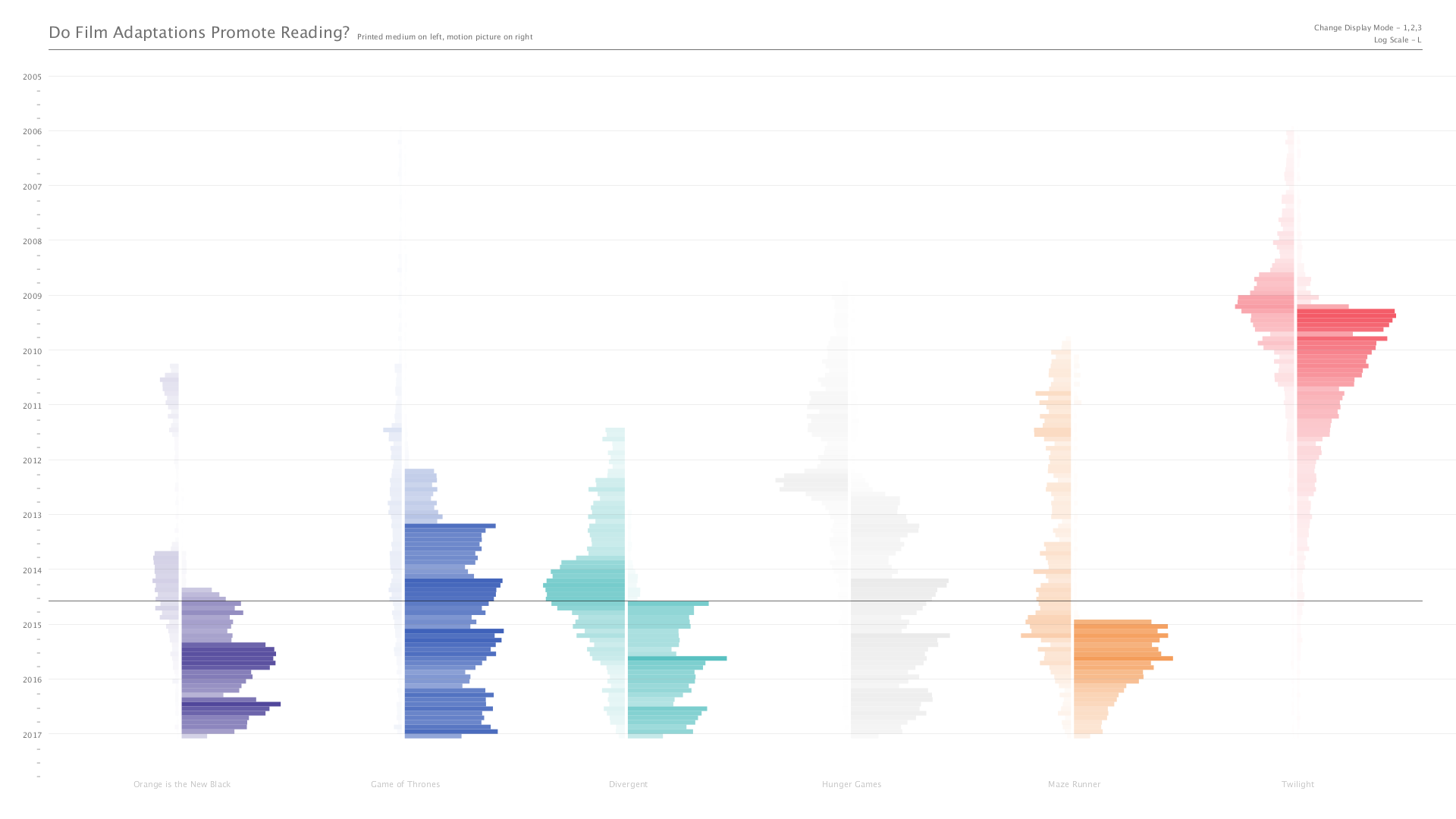
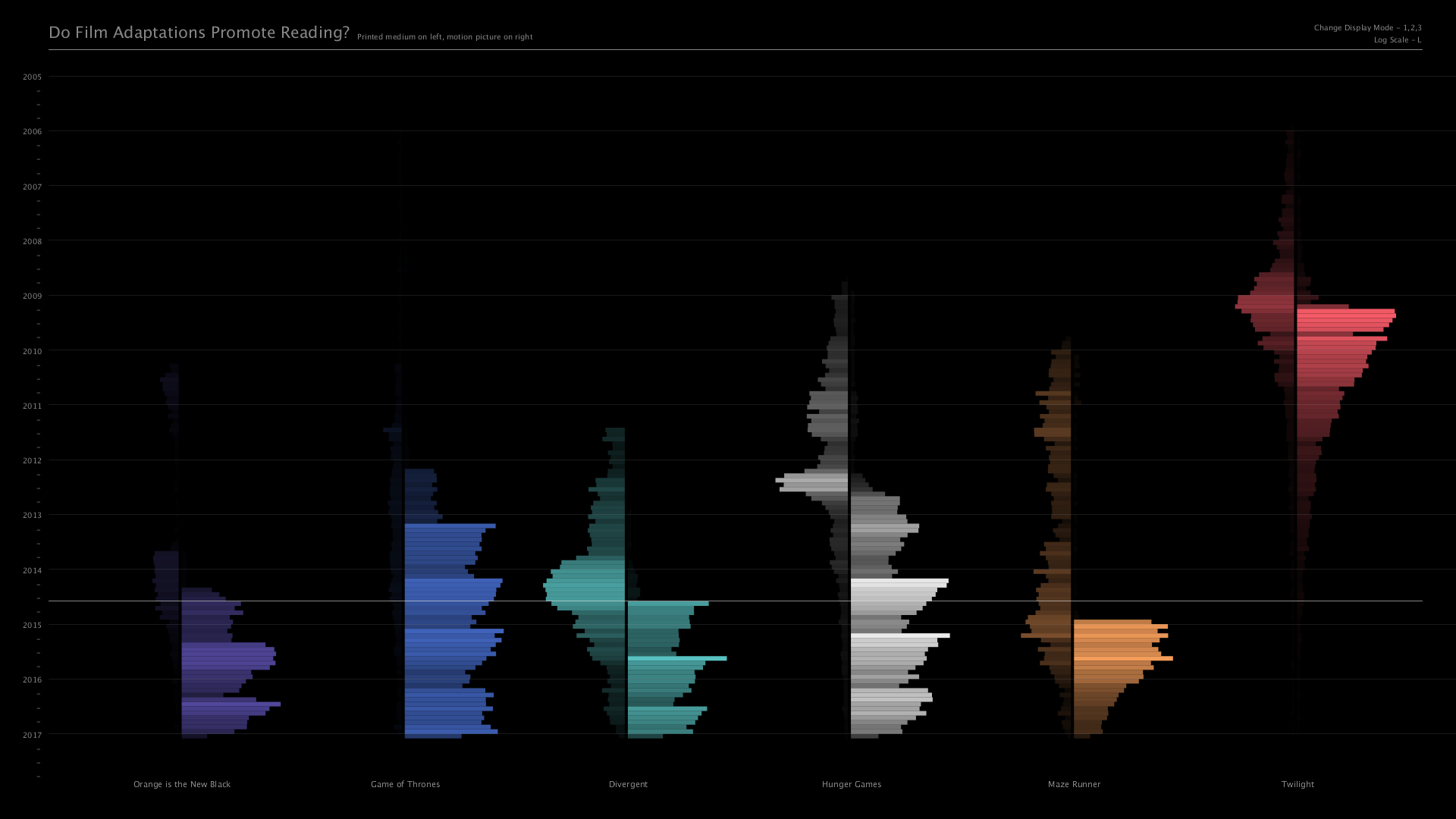 Color and width display (2)
Color and width display (2)
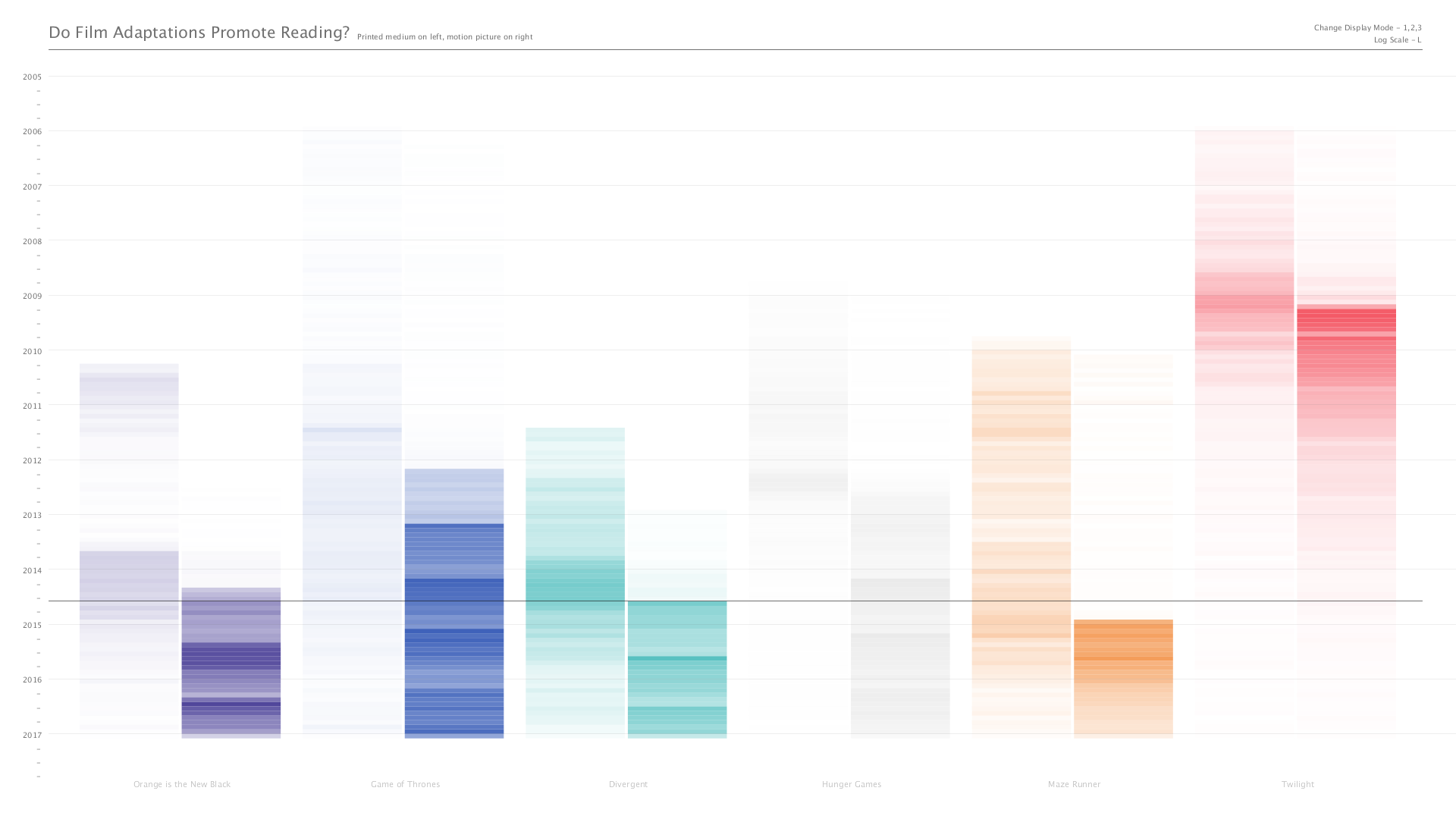
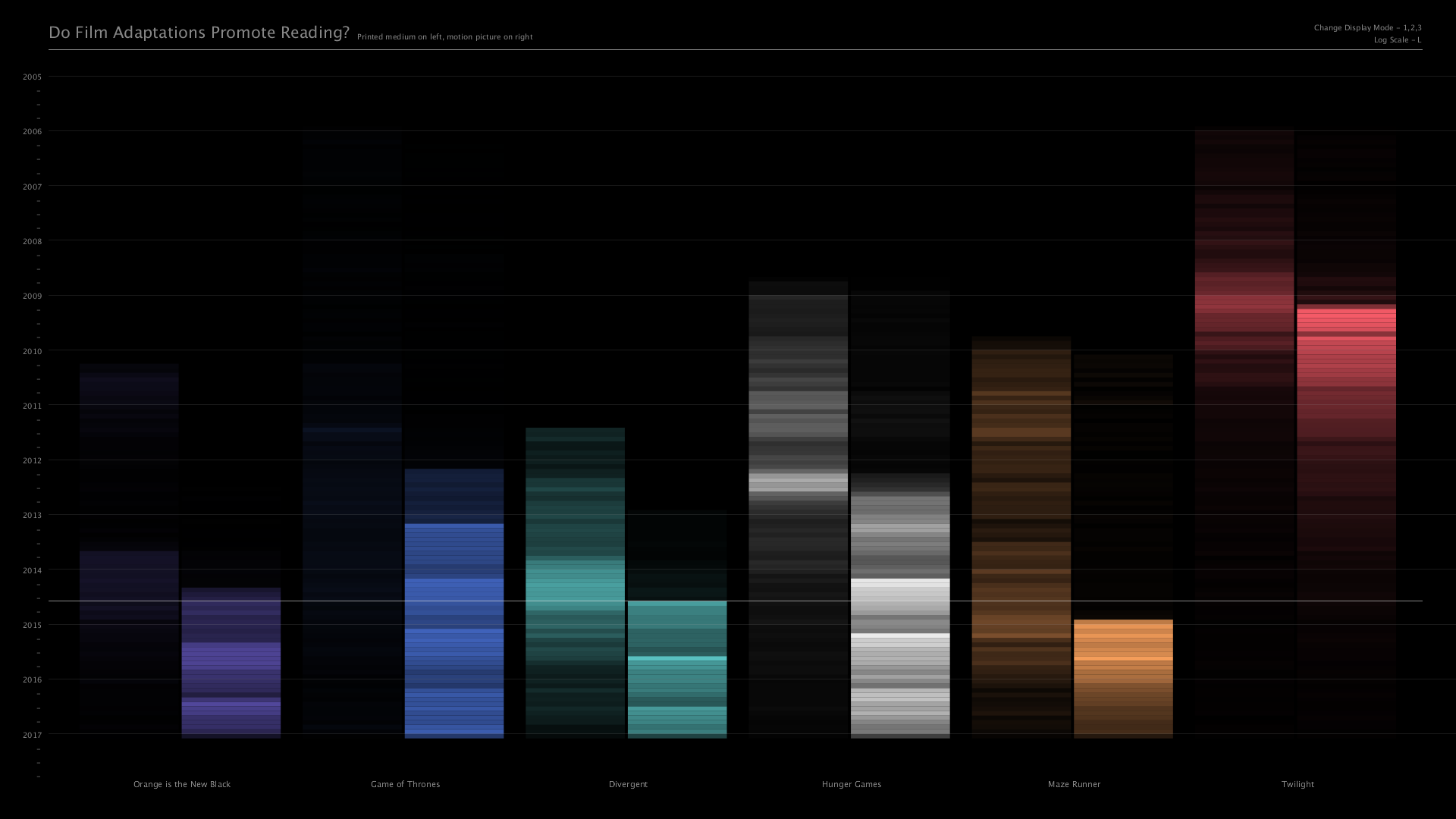 Color display only (1)
Color display only (1)
Alternatively, anytime in the execution, the background color can be changed from dark to light and vice versa.
Keyboard Shortcuts:

 Width display only (3)
Width display only (3)
 Color and width display (2)
Color and width display (2)
 Color display only (1)
Color display only (1)Evaluation/Analysis
The general trend of movie checkout vs book checkout relation seems to be that the more a movie becomes popular the quicker its original book attracts attention on itself.
For Hunger Games, the trend reveals that before the movie release people were actively reading the book. After two months from the release, the book checkouts dropped drastically and left its place to DVD and cd checkouts.
As for Game of Thrones, while reading rates progressing slowly but steadily, there is a quick jump when the shows announced. However, it could not maintain this popularity and left its portion to the media disks.
The similar trend is also apparent for the other titles. My main intuition that the motion picture alternatives of the titles could potentially increase the book checkouts proved wrong in the sense that when the alternative is announced, there is indeed a jump in the printed medium checkouts, however, as the time goes by, the motion picture alternatives suppress them and claim their victory over printed medium. I would expect a steady increase in the printed medium since people may want to learn the real story behind the scenario.
For Hunger Games, the trend reveals that before the movie release people were actively reading the book. After two months from the release, the book checkouts dropped drastically and left its place to DVD and cd checkouts.
As for Game of Thrones, while reading rates progressing slowly but steadily, there is a quick jump when the shows announced. However, it could not maintain this popularity and left its portion to the media disks.
The similar trend is also apparent for the other titles. My main intuition that the motion picture alternatives of the titles could potentially increase the book checkouts proved wrong in the sense that when the alternative is announced, there is indeed a jump in the printed medium checkouts, however, as the time goes by, the motion picture alternatives suppress them and claim their victory over printed medium. I would expect a steady increase in the printed medium since people may want to learn the real story behind the scenario.
Code